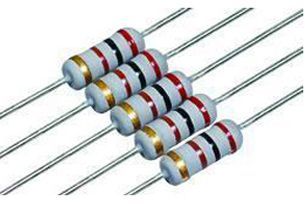What are the types of power resistors?
In the field of electronics, power resistors are indispensable components used to regulate current flow in circuits. They are specifically designed to handle high power dissipation and are available in various types, each with its unique characteristics and specifications. Understanding the role and different aspects of power resistors is essential for engineers, technicians, and anyone involved in electronic systems.
What Are Power Resistors?
Power resistors are passive electronic components that provide resistance to electrical current, converting excess electrical energy into heat. They are designed to handle substantial amounts of power and are used in applications where high power dissipation is required. These resistors help prevent damage to electronic devices by controlling and limiting the flow of current.

Types of Power Resistors
1 Wire-Wound Resistors
Wire-wound resistors are constructed by winding a resistive wire around a non-conductive core. They offer high power handling capabilities and are suitable for applications involving high voltage, high current, or high-temperature environments. Wire-wound resistors provide excellent stability and accuracy.
2 Thick Film Resistors
Thick film resistors are created by depositing a resistive material onto a ceramic substrate. They are cost-effective and offer good stability and reliability. These resistors are widely used in a variety of applications, including power supplies, automotive electronics, and consumer electronics.
3 Thin Film Resistors
Thin film resistors are manufactured by depositing a thin layer of resistive material onto a ceramic or semiconductor substrate. They offer high precision and stability with low temperature coefficients. Thin film resistors are commonly used in high-frequency applications and precision measurement equipment.
4 Metal Oxide Film Resistors
Metal oxide film resistors are constructed by depositing a resistive film onto a ceramic substrate. They exhibit high reliability, stability, and resistance to high temperatures. Metal oxide film resistors are suitable for applications requiring high endurance and precision.
5 Carbon Composition Resistors
Carbon composition resistors are made by mixing carbon particles with a binder material and then molding them into the desired shape. Carbon film resistors offer good tolerance to high energy pulses and are commonly used in high-voltage applications and industrial equipment.
Characteristics and Specifications
To select the right power resistor for a specific application, several characteristics and specifications need to be considered. The following are some key factors:
Power Rating
The power rating of a resistor indicates the maximum amount of power it can safely dissipate without getting damaged. It is crucial to select a resistor with a power rating higher than the power dissipation expected in the application.
Resistance Value
The resistance value determines the level of resistance provided by the resistor. It is essential to choose a resistor with the appropriate resistance value to ensure the desired current flow and voltage drop across the circuit.
Tolerance
Tolerance refers to the allowable deviation in the resistance value from the specified resistance. It indicates the precision of the resistor and its ability to maintain the desired resistance value. Lower tolerance values indicate higher precision.
Temperature Coefficient
The temperature coefficient determines how the resistance of a resistor changes with temperature. It is crucial to select a resistor with a low temperature coefficient to minimize variations in resistance due to temperature changes.
Voltage Rating
The voltage rating indicates the maximum voltage that a resistor can withstand without breakdown or damage. It is essential to choose a resistor with a voltage rating higher than the expected voltage across the circuit.



